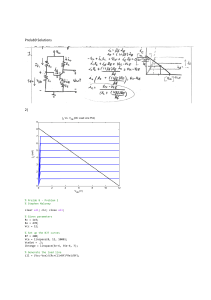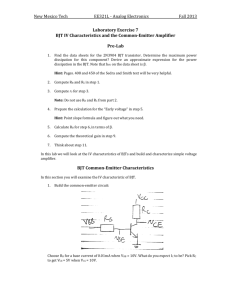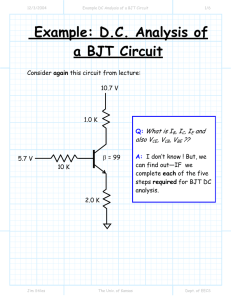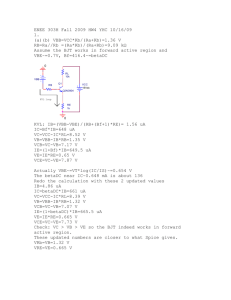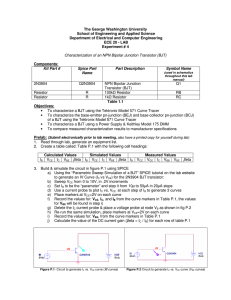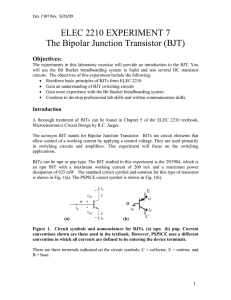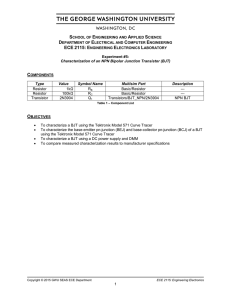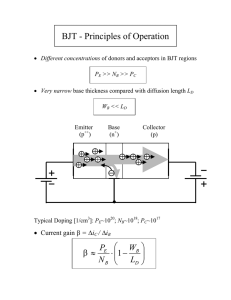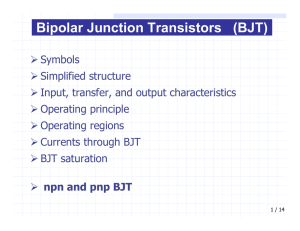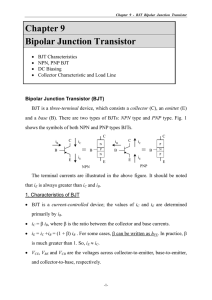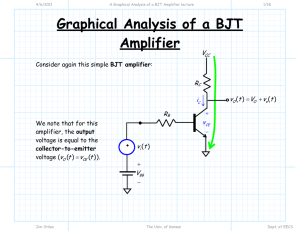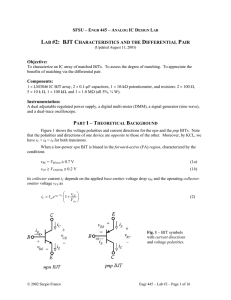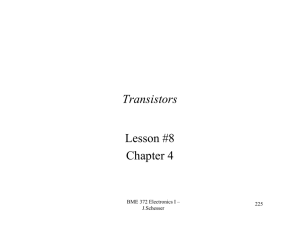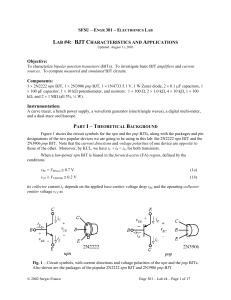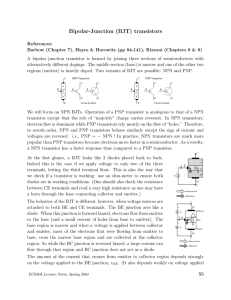Lab 3
advertisement
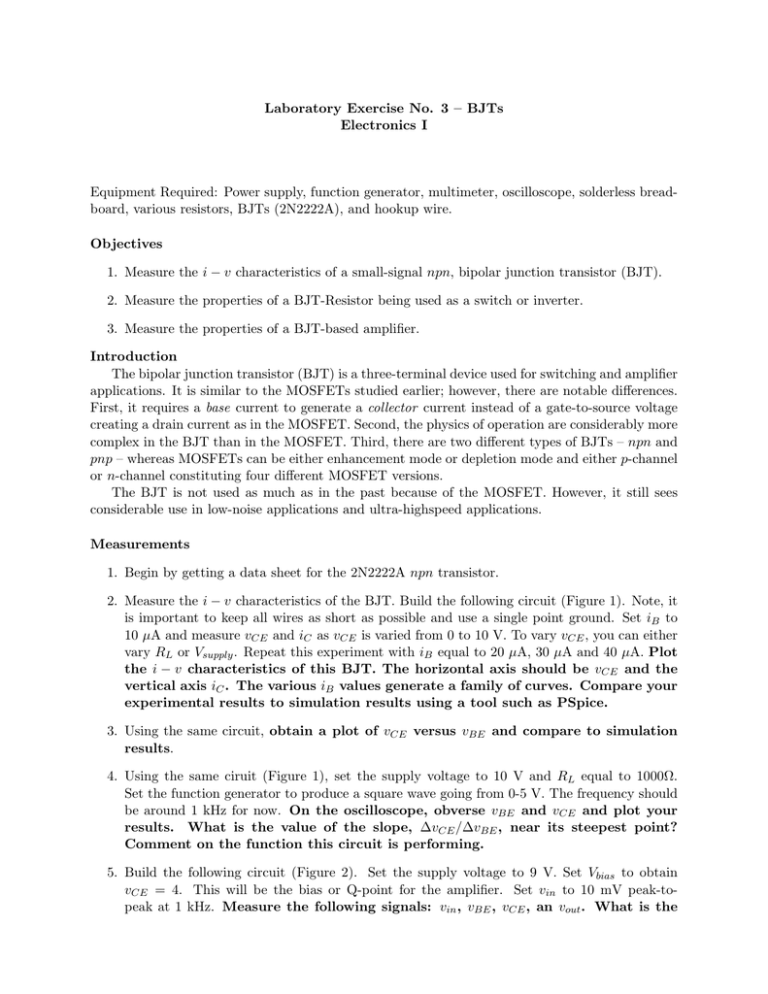
Laboratory Exercise No. 3 – BJTs Electronics I Equipment Required: Power supply, function generator, multimeter, oscilloscope, solderless breadboard, various resistors, BJTs (2N2222A), and hookup wire. Objectives 1. Measure the i − v characteristics of a small-signal npn, bipolar junction transistor (BJT). 2. Measure the properties of a BJT-Resistor being used as a switch or inverter. 3. Measure the properties of a BJT-based amplifier. Introduction The bipolar junction transistor (BJT) is a three-terminal device used for switching and amplifier applications. It is similar to the MOSFETs studied earlier; however, there are notable differences. First, it requires a base current to generate a collector current instead of a gate-to-source voltage creating a drain current as in the MOSFET. Second, the physics of operation are considerably more complex in the BJT than in the MOSFET. Third, there are two different types of BJTs – npn and pnp – whereas MOSFETs can be either enhancement mode or depletion mode and either p-channel or n-channel constituting four different MOSFET versions. The BJT is not used as much as in the past because of the MOSFET. However, it still sees considerable use in low-noise applications and ultra-highspeed applications. Measurements 1. Begin by getting a data sheet for the 2N2222A npn transistor. 2. Measure the i − v characteristics of the BJT. Build the following circuit (Figure 1). Note, it is important to keep all wires as short as possible and use a single point ground. Set iB to 10 µA and measure vCE and iC as vCE is varied from 0 to 10 V. To vary vCE , you can either vary RL or Vsupply . Repeat this experiment with iB equal to 20 µA, 30 µA and 40 µA. Plot the i − v characteristics of this BJT. The horizontal axis should be vCE and the vertical axis iC . The various iB values generate a family of curves. Compare your experimental results to simulation results using a tool such as PSpice. 3. Using the same circuit, obtain a plot of vCE versus vBE and compare to simulation results. 4. Using the same ciruit (Figure 1), set the supply voltage to 10 V and RL equal to 1000Ω. Set the function generator to produce a square wave going from 0-5 V. The frequency should be around 1 kHz for now. On the oscilloscope, obverse vBE and vCE and plot your results. What is the value of the slope, ∆vCE /∆vBE , near its steepest point? Comment on the function this circuit is performing. 5. Build the following circuit (Figure 2). Set the supply voltage to 9 V. Set Vbias to obtain vCE = 4. This will be the bias or Q-point for the amplifier. Set vin to 10 mV peak-topeak at 1 kHz. Measure the following signals: vin , vBE , vCE , an vout . What is the Figure 1: A circuit used to obtain the i − v characteristics of a BJT and observe inverter operation. Figure 2: A BJT inverting amplifier with separate signal and bias voltage supplies. amplification factor for this circuit? Simulate the circuit in PSpice or similar program. 2 6. Increase vin while observing vCE . At what input level does vCE become visibly distorted? Vary VBB to see if you can increase the input signal before visible distortion occurs. What values of vCE and vBE allow the largest vout before visible distortion sets in? Verbal Lab Report The Verbal Lab Reports should be done individually. Be prepared to set up any of the circuits in the lab, make measurements, and explain the meaning of the measurements. 3
